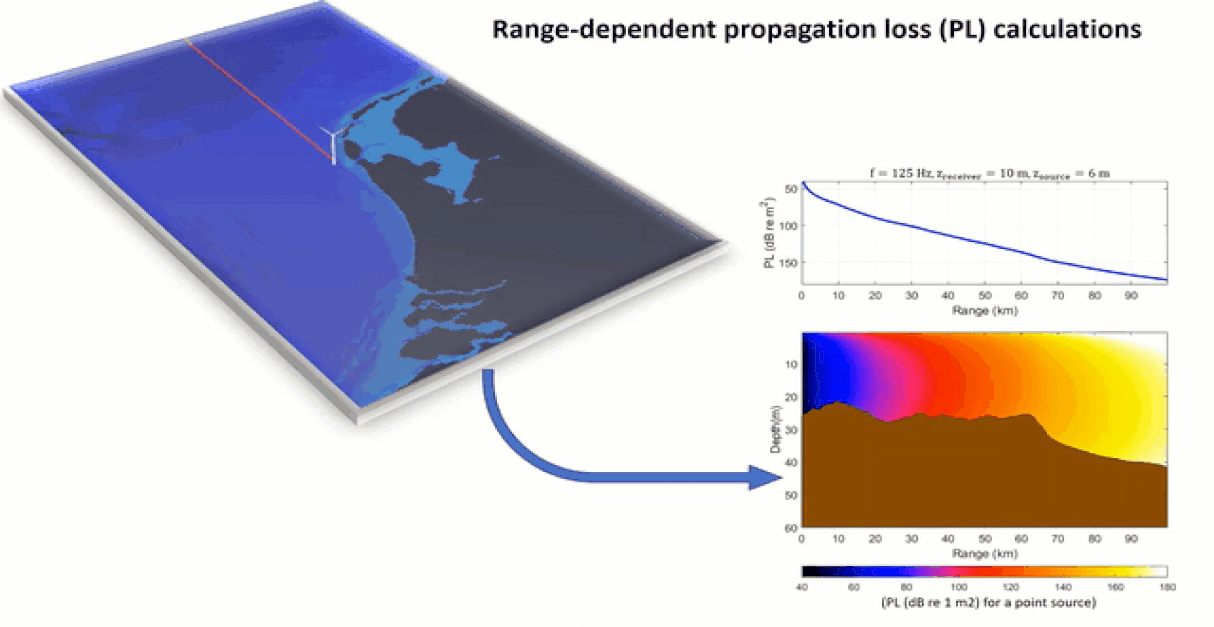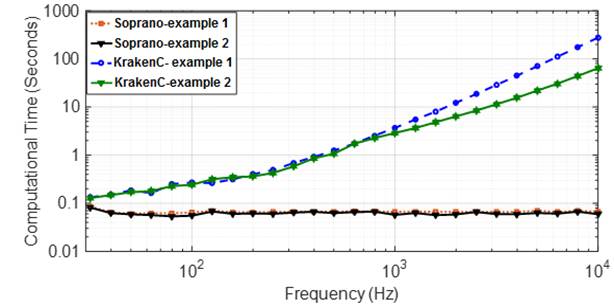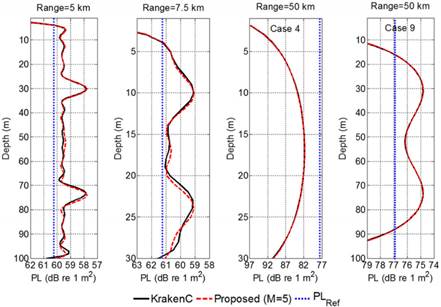Method: Hybrid mode-flux theory
Model output: propagation loss in the water layer
Description: SOPRANO used a hybrid approach based on Weston's flux and normal mode theories to calculate depth and range dependent propagation loss (incoherent) in the shallow water [1,2,3]. The first version of SOPRANO is developed during the Ph.D. project of H.O. Sertlek at the Institute of Biology, Leiden University [1]. Further developments have been made at TU Delft as a part of a Post-Doc project. SOPRANO can calculate the propagation loss as accurately as the adiabatic mode theory without the long computational times for calculating eigenvalues. Its accuracy is tested with various methods (ray theory, parabolic equation, Weston's flux, adiabatic, and coupled modes) based on Weston Memorial Workshop test cases. The detailed comparisons are given in the references [1,2,3] with other underwater acoustic codes (Kraken, Bellhop, Peregrine). SOPRANO can be an efficient tool, especially for the large scale underwater acoustic problems (i.e., sound mapping simulations which require the calculation for multiple sources and receiver points at the different depths for a wide frequency band).
Examples: Propagation Loss results of Soprano are shown for the selected radial batymetry slices from the Dutch North Sea
Software request form: Please fill in the request form online to request this software package and our research team will contact you.
Feedback/suggestions: If you have any questions, feedback, or suggestion, please contact us with the feedback form or e-mail.
References:
- H.Ö.Sertlek, M.A. Ainslie, A depth-dependent formula for shallow water propagation, J. Acoust. Soc. Am.,136(2),57-582,2014, [CrossRef].
- H.Ö.Sertlek, M.A. Ainslie, K. Heaney, Analytical and Numerical Propagation Loss Predictions for Gradually Range-Dependent Isospeed Waveguides, IEEE Journal of Ocean Engineering, Volume: 44, Issue: 4, Oct. 2019, [CrossRef].
- H.Ö. Sertlek, Aria of the Dutch North Sea, Ph.D. thesis, University of Leiden, 2016, [CrossRef]



